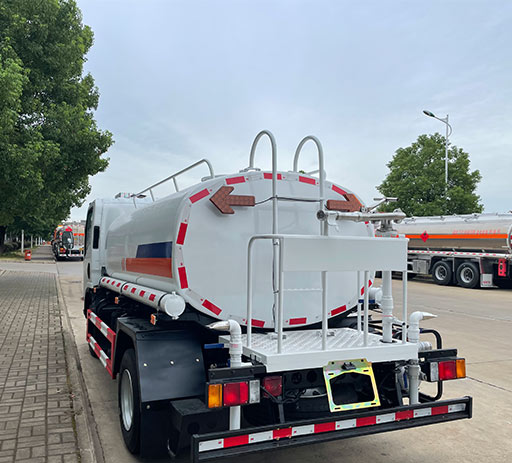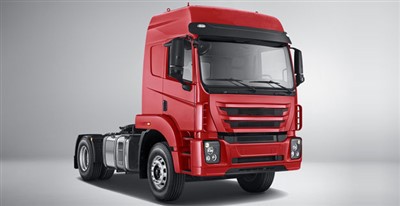Garbage trucks are an essential part of our waste management systems, helping to keep our cities clean and functional. Have you ever wondered how garbage trucks work? This comprehensive article explores the mechanics, types, and technology behind garbage trucks while providing practical insights into their operation. We will discuss the role of garbage trucks in waste management and explore their inner workings, innovations, and environmental impacts.
Understanding the Basics of Garbage Trucks
Garbage trucks, also known as waste collection vehicles, are specially designed to transport waste from residential, commercial, and industrial areas to disposal facilities. Understanding how these trucks work requires knowledge of their components, collection mechanisms, and the processes involved in waste management.
The Anatomy of a Garbage Truck
A garbage truck consists of several key components, each playing a crucial role in its operation. The main parts include:
- Chassis: The framework of the truck, which supports the other components.
- Compaction System: Compresses waste to maximize space within the truck.
- Loading Mechanism: The mechanism used to collect and load waste into the truck.
- Lift System: Involved in raising bins or containers to dump waste into the truck.
- Container: The body that holds the compressed waste.
- Cab: The area where the driver sits and controls the vehicle.
- Braking System: Ensures safe operations while driving and loading waste.
- Safety Equipment: Includes cameras, alarms, and beacons for safe operation.
Types of Garbage Trucks
There are several types of garbage trucks, each designed for specific waste collection needs. Some common types include:
Front-Loading Trucks
These trucks have a front-loading mechanism used to lift large waste containers and dump their contents into the truck’s body. They are commonly used in commercial areas.
Rear-Loading Trucks
Rear-loading trucks are equipped with a compaction system at the back, allowing manual loading of waste by crews. These are often used for residential collections.
Side-Loading Trucks
These trucks have a mechanical arm on the side that lifts and dumps garbage into the truck. They are efficient for both residential and commercial waste collection.
Automated Garbage Trucks
Automated trucks utilize robotics and have sensors to collect waste with minimal human intervention, enhancing safety and efficiency.
How Garbage Trucks Operate
Understanding the operational mechanics of garbage trucks can shed light on their efficiency and functionality. Here’s a step-by-step breakdown of how garbage trucks operate:
Waste Collection Process
The waste collection process typically involves the following steps:
- Route Planning: Waste management companies plan efficient routes for garbage trucks to minimize travel time and fuel consumption.
- Arrival at Collection Points: Trucks arrive at designated stops, which include residential areas and commercial facilities.
- Loading Waste: The truck’s lift system engages, whether it’s manual or automated, to collect waste from bins and containers.
- Compaction: As waste is loaded into the truck, the compaction mechanism compresses it to maximize space.
- Transporting Waste: Once filled, the truck transports the waste to a disposal facility or landfill.
The Collection Mechanism
The collection mechanism can vary based on truck type, but the fundamental principle involves lifting containers and dumping waste into the truck’s body. Here’s a deeper look into how each mechanism functions:

Manual Collection
In rear-loading trucks, waste collectors load the trash manually. They rely on physical labor to lift and dump the waste into the truck.
Automated Collection
Automated systems are equipped with robotic arms that can pick up standard waste bins, eliminating the need for manual lifting. This enhances worker safety and efficiency.
The Technology Behind Garbage Trucks
Modern garbage trucks are equipped with advanced technologies that improve their efficiency and effectiveness. Here are a few notable technologies:
GPS and Route Optimization
Garbage trucks are increasingly using GPS technologies to optimize their routes. This reduces fuel consumption and travel time, leading to cost savings for waste management companies.
Smart Sensors
Equipped with smart sensors, some trucks can detect when containers are full or need replacement, allowing timely waste collection and reducing overflow.
Compaction Technology
Modern compaction systems are highly efficient, allowing trucks to carry more waste without increasing their fuel consumption significantly.
Environmental Impacts of Garbage Trucks
Garbage trucks play a critical role in waste management, but they also have environmental impacts. Here’s a look at these effects:
Air Pollution
Garbage trucks emit greenhouse gases and other pollutants during operation. Waste management companies are adopting alternative fuel technologies to minimize these emissions.
Noise Pollution
The operation of garbage trucks contributes to noise pollution, especially in residential areas. Solutions such as quieter truck engines and optimized routes can help mitigate this issue.
Best Practices for Effective Waste Management
Implementing effective waste management strategies can enhance the efficiency of garbage trucks. Here are some best practices:
Community Engagement
Waste management is more effective when communities are engaged in waste reduction initiatives, such as recycling and composting programs.
Regular Maintenance of Trucks
Regular maintenance ensures that garbage trucks operate efficiently and minimizes breakdowns, which can disrupt waste collection schedules.
Using Eco-Friendly Practices
Integrating sustainability into waste management initiatives, such as converting waste to energy or using alternative fuels, reduces the environmental impact of garbage collection.
Challenges Faced by Waste Management Systems
Despite their importance, garbage trucks and waste management systems face several challenges:
Budget Constraints

Many municipalities struggle with budget constraints, limiting the resources available for waste management.
High Operating Costs

Wage costs, fuel prices, and maintenance expenses can weigh heavily on waste management budgets, necessitating innovative approaches to manage expenses.
Public Perception and Education
Some communities may not prioritize waste management, requiring education to encourage responsible waste disposal practices.
Conclusion
Garbage trucks are vital for maintaining public health and environmental cleanliness. Understanding how they work, their types, and their operational mechanisms can help us appreciate their role in our communities. Through advanced technologies and best practices, waste management can become more efficient and sustainable, minimizing environmental impacts and enhancing public engagement.
FAQ Section
1. How many types of garbage trucks exist?
There are several types of garbage trucks, including front-loading, rear-loading, side-loading, and automated trucks, each designed for specific waste collection needs.
2. What is the compaction ratio of a garbage truck?
The compaction ratio typically ranges from 4:1 to 8:1, meaning that the trash is compressed to occupy significantly less space than when collected.
3. How do automated garbage trucks work?
Automated garbage trucks use robotic arms or automated systems to lift and empty waste containers, reducing the need for manual labor and increasing efficiency.
4. What types of waste can garbage trucks collect?
Garbage trucks can collect various types of waste, including household trash, yard waste, recyclables, and commercial waste, depending on local regulations and services.
5. What happens to the waste after it is collected?
After collection, the waste is transported to landfills, recycling centers, or waste-to-energy facilities for processing and disposal.
6. How can communities support waste management efforts?
Communities can support waste management by practicing recycling, reducing waste generation, participating in community clean-ups, and supporting local waste management initiatives.